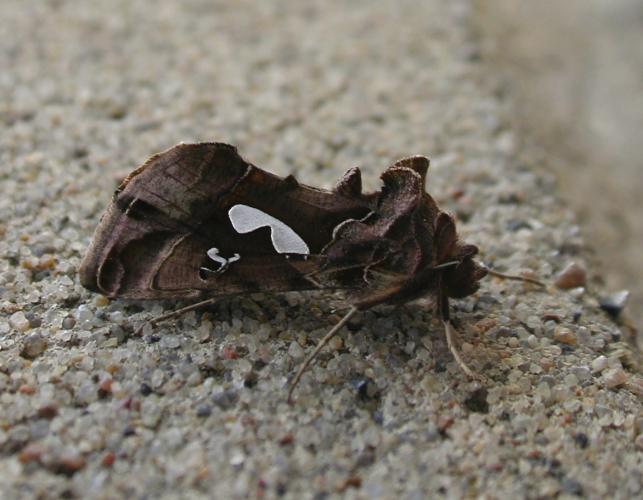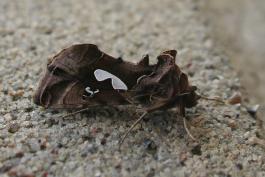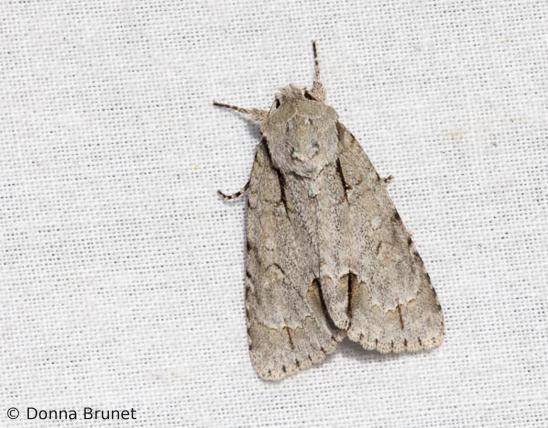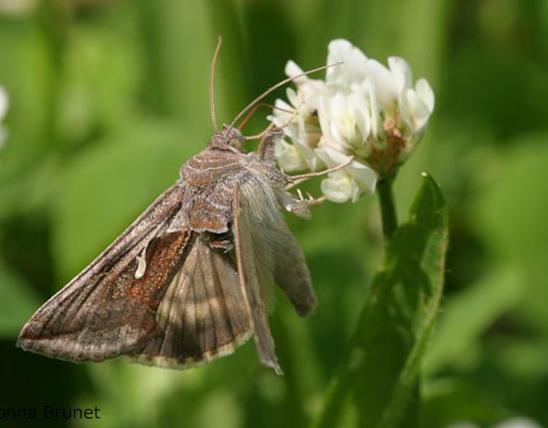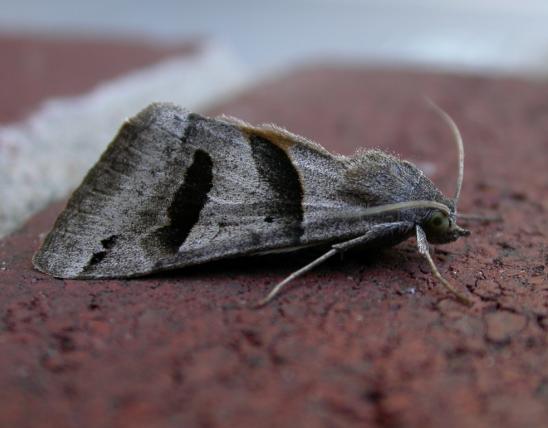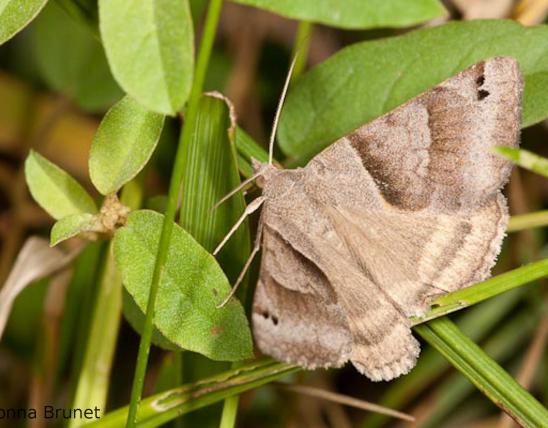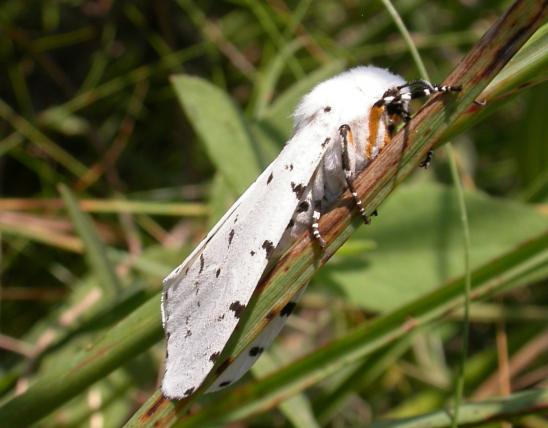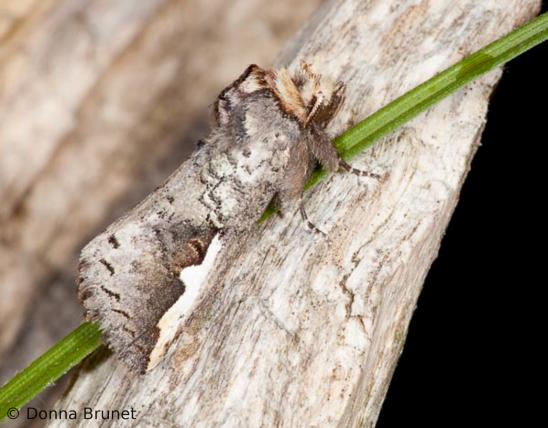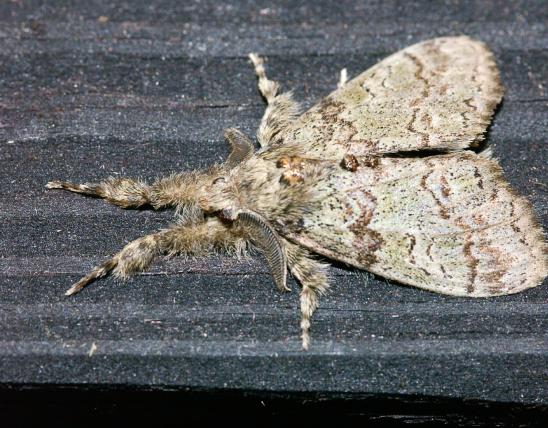
The bilobed looper moth has a B-shaped (two-lobed) silvery-white spot on each forewing. The forewings are brown with darker brown metallic shading. A thin pale or silvery band crosses the wings above and below the middle (technically, these are antemedial, or AM, and postmedial, PM, lines); between those bands, the color is often more rusty or golden brown. An additional silvery spot (a partial reniform spot) appears rather C-shaped between the lower part of the B and the leading edge of the wing. The hindwings are rather plain and are a more grayish shade of brown.
The caterpillars are similar to loopers (inchworms, such as in geometrid moths), but with three (not two) pairs of legs on the hind portion of the body, making them "semi-loopers." They are usually bluish green with a band of thin pale stripes down the back and a single thin pale stripe along each side. The head has a shiny black band on each side (it kind of looks like a black blindfold); the front three pairs of legs are black; and the body has several small, fine, hair-like spines protruding from it.
This is one of many species of moths in the noctuid, or owlet moth family. For more information, see the their group page.
Similar species: This is the only species in its genus, worldwide. Fortunately, it is readily distinguished from similar moths by its conspicuous silvery-white B on each forewing. It used to be placed in genus Autographa, and there are nearly 20 species in that genus in North America north of Mexico. Other closely related genera are Syngrapha, Plusia, and Anagrapha (the last including the celery looper, a common Missouri species). These and other members of noctuid subfamily Plusiinae are all called "looper moths" because their caterpillars walk like inchworms, by "looping."
Wingspan: 1¼–1¾ inches.
Statewide. Occurs throughout most of the United States.
Habitat and Conservation
Adult bilobed looper moths are commonly seen visiting flowers but are reportedly seldom seen at lights.
The caterpillars feed on a variety of garden crops as well as many other types of plants.
Food
The bilobed looper is a generalist when it comes to caterpillar food plants. It has been reported on a wide variety of vegetable crops as well as cultivated and not-cultivated flowers. Among the foods the caterpillars may eat are alfalfa and beans (in the bean family), barley (a grass), cabbages and their relatives/cultivars (in the mustard family), cranesbill (in the geranium family), dandelion, wingstems, and lettuce (in the sunflower family), gladiolus (in the iris family), plus members of the mint, buttercup, nightshade, and verbena families.
Status
Breeding resident.
Life Cycle
Adults of this species occur in Missouri from early spring until autumn, with peak numbers in May, June, and July.
Human Connections
The larvae of this species occasionally injure garden vegetables, including lettuce.
Although many noctuid moths are cryptically camouflaged with swirly shades of tan and brown (and look confusingly similar), this species is one that is fairly easy to identify.
The genus name, Megalographa, means "large writing" and can be interpreted as "large-lettered." The species name, biloba, means "bilobed" or "two-lobed."
Ecosystem Connections
While many species of moths, as caterpillars, are confined to eating only certain types of food plants, the bilobed looper can thrive on a wide variety. This helps explain why this species is so widespread and common, with a range extending from southern Canada all the way into South America. The type specimen for this species (the preserved individual moth that accompanied the first official written scientific description as an example of this as a new species) was collected in Venezuela.
